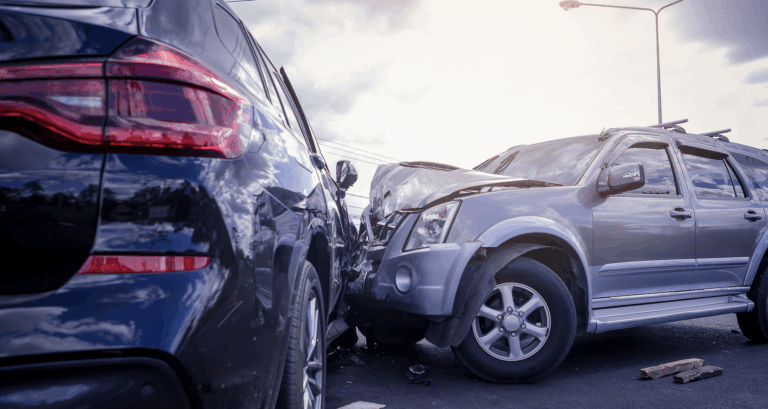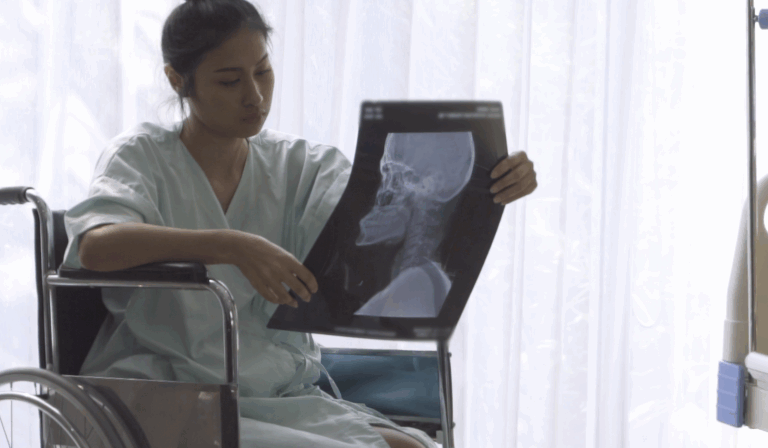Author: Shelby Benavidez
When it comes to vehicle safety and legal compliance, mirrors might not be the first thing that comes to mind, but they matter more than you might think. Whether you’ve recently lost a side mirror in a fender bender or you’re customizing your ride, it’s important to know what the law actually requires.
Do you really need a side mirror to drive legally? The answer depends on your vehicle’s design, your rear visibility, and how state and federal regulations apply. In this blog, we’ll break down mirror laws, when side mirrors are legally necessary, and why keeping them intact could save you from fines, inspection failures, or even legal trouble after an accident.
Understanding Rearview Mirror Laws
What the Law Says About Mirrors
Federal Motor Vehicle Safety Standard (FMVSS) requires that passenger cars have at least one exterior mirror on the driver’s side if the interior mirror doesn’t provide an adequate view to the rear. Therefore, if the center mirror is obstructed or non-functional, a driver’s side mirror is required by federal law.
While the states have to comply with the federal standard, each state has their own requirements regarding rear-view mirrors in motor vehicles. In Texas, for example, mirror requirements for vehicles are governed by Section 547.602 of the Texas Transportation Code, which states that a vehicle must be equipped with a mirror that provides the driver with a view of the highway for at least 200 feet behind the vehicle. With this verbiage, the law doesn’t specifically require the use of a side mirror. If a driver has the required visibility using a center rearview mirror, the law may technically be satisfied.
When Side Mirrors Become Legally Necessary
The type of car you drive and the condition that it’s in play a crucial role in determining if a side mirror is legally necessary. For vehicles that have a clear rear window and a functioning center mirror, you may be able to get away without having a side mirror. However, if the rear window is blocked, either by design or by modifications such as heavy tinting or even personal items in your backseat or trunk, your only other option is to rely on your side mirrors.
Larger vehicles, such as trucks and vans, almost always require side mirrors because their design typically limits visibility through an interior mirror alone. For example, 18-wheelers pulling trailers have no interior rear-view mirror at all, so they rely entirely on side mirrors to monitor traffic behind them and along both sides of the truck. These mirrors are especially critical for spotting passing cars, particularly during lane changes where blind spots are much larger and more dangerous. Without side mirrors, or alternatives such as electronic mirrors or cameras, safe operation of such large vehicles would be nearly impossible.
Missing a Side Mirror
Can You Be Pulled Over or Fined for Missing a Side Mirror?
Police officers can pull you over if they suspect your vehicle doesn’t allow the required rear-view visibility. While the law allows some flexibility in how that visibility is achieved, the absence of a side mirror, especially on the driver’s side, may lead an officer to reasonably suspect a violation. If a driver is found not to be in compliance, they can be issued a citation. These vary across states, and even counties, but in Texas, this is a Class C misdemeanor, which carries a fine of up to $200. It’s typically considered a minor offense, but it can still negatively affect a driver’s record and become more serious if lack of visibility causes an accident.
Insurance Consequences and Liability Risks
If you drive without a side mirror when one is needed, you open yourself up to bigger insurance and legal problems. After a crash, your insurer could deny your claim or blame you for a larger share of the fault because the missing mirror reduced your visibility. Even if they pay, they might raise your premium since they now see you as a risky driver.
In a lawsuit, the other driver can argue that skipping the mirror was negligent, especially in lane‑change, merge, or rear‑end crashes where mirrors matter most. A judge could agree and assign you a larger share of the blame if you live in a comparative‑fault state.
Custom Cars, Off-Road Vehicles, and Modified Rides
Drivers who modify their vehicles for aesthetic or functional reasons are free to do so as long as the changes don’t interfere with the vehicle’s compliance with state laws and regulations. Before removing mirrors for a cleaner look or customization, you should consider the safety risks and determine if your customizations still follow visibility laws.
Mods that block the rear window like camper shells, partitions, or certain interior setups often mean you need to have a driver’s side mirror, and possibly a passenger-side mirror too. Driving without the right mirrors in these cases could be seen as unsafe or even reckless.
Best Practices and Legal Recommendations
The Safe Option: Keep Both Side Mirrors Intact
While the law may not strictly require both side mirrors in every scenario, keeping all mirrors intact is the safest and most legally sound choice. Doing so keeps your vehicle in full compliance with state and federal visibility standards and reduces the likelihood of receiving a ticket or being sued in a civil case for negligence. Even beyond the legalities, having both mirrors helps keep you and other drivers safe by reducing the likelihood of accidents due to blind spots during lane changes.
What to Do If Your Side Mirror Is Damaged or Missing
If a mirror gets broken or knocked off, first check whether you can still clearly see behind you using the center rearview mirror. If not, it’s safest to avoid driving until the mirror is fixed. Getting it repaired quickly helps you stay legal and safe on the road. If you’re pulled over, showing that you’ve already scheduled the repair and being polite may help you avoid a ticket, though that’s up to the officer.
If the damage happened in an accident, your insurance, or the other driver’s, if they were at fault, should cover the cost of replacing the mirror. If your policy includes rental coverage, it should also pay for a rental car while yours is in the shop.
Consult Legal or Automotive Professionals if in Doubt
If you’re not sure whether your mirrors meet the legal requirements, it’s a good idea to ask a licensed mechanic or a certified inspection station. They can check if your setup gives you a clear view and meets the minimum standard of at least 200 feet behind your vehicle. If you’ve been ticketed for a missing mirror or were in a crash where mirror visibility might be questioned, talking to a traffic or personal injury attorney can help you understand your legal options.
While side mirrors aren’t always required by law, you are required to see clearly behind you. If your center mirror can’t do that because of your vehicle’s design or something blocking the view, a driver’s side mirror becomes legally necessary. All in all, keeping both side mirrors in place is the safest and smartest move. It helps you follow the law, drive more safely, and avoid problems with police, insurance companies, or legal claims. For most people, it’s a small price to pay for peace of mind.




